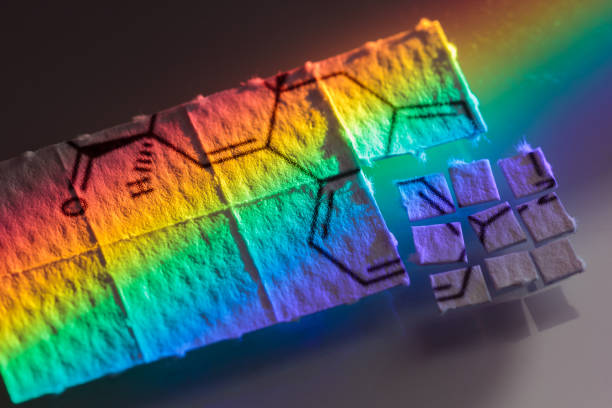Psychedelics like LSD (lysergic acid diethylamide) and DMT (N,N-dimethyltryptamine) are often grouped together, but they shape consciousness and inner experience in distinctive ways. By comparing what research and testimonials say, we can better understand how each drug shifts perception, cognition, ego, and the sense of reality.
How They Work Pharmacologically
- Both LSD and DMT are serotonergic psychedelics, meaning they heavily interact with serotonin receptors—particularly the 5-HT2A receptor. This receptor is central for producing the hallucinogenic, perceptual, and emotional effects.
- LSD has a long duration of action, often producing effects that last 6 to 12 hours or more, with gradual onset and offset.
- DMT is much shorter-acting (especially when inhaled or injected), sometimes lasting only 10-30 minutes, though the intensity of those minutes is often far greater per unit time.
The Subjective Experiences: What Users Report
Ego & Self-Boundary Dissolution
- LSD often leads to “ego-dissolution” experiences: a loosening or loss of self boundaries, a sense of unity, spiritual or mystical insight, and altered sense of time. Many users describe significant introspection and emotional insights, where long-held beliefs or thoughts surface.
- DMT, despite its shorter duration, tends to produce very rapid ego dissolution. Some report being thrust into alternate realities, meeting “entities,” experiencing otherworldly realms. Because its onset is swift, there’s usually less time for gradual build-up—reality as known is often radically disrupted almost immediately.
Perception, Visuals & Time
- LSD visuals tend to evolve slowly. Colors, patterns, audio-visual synesthesia, enhanced detail in surroundings, distortions of geometry and perspective. Because the trip is longer, these visuals can be both external (open-eye) and internal (closed-eye), with the hallucinations often more sustained.
- DMT visuals are frequently described as “breakthroughs”: extremely intense, immersive, wild distortions, geometric and alien landscapes, often with a sense of being elsewhere. Time feels compressed or drastically distorted. Because DMT comes on fast, its peak effects are intense from the start.
Brain Activity, Neural Connectivity, and Mind States
Research using imaging (e.g. fMRI, EEG) has started to map how LSD and DMT alter brain dynamics:
- Under LSD, different brain regions that don’t usually communicate (or are more isolated in normal waking consciousness) become more integrative. The “default mode network” (DMN)—a brain network involved in self-referential thoughts, mind wandering, and sense of ego—tends to have reduced or altered activity. LSD leads to higher global functional connectivity, increased neural signal diversity.
- With DMT, similar patterns show up: increased interconnectivity between regions, desegregation of ordinary network structures, changes in conscious content complexity. Because the DMT experience is short, scientists often track rapid onset/offset of these connectivity shifts.
Psychological & Therapeutic Implications
- Both LSD and DMT are being studied (or re-studied) for their potential therapeutic benefits: depression, trauma, end-of-life anxiety, and other mental health conditions. Because they can disrupt rigid patterns of thought or perception, they may help people break out of negative loops (rumination, fear responses, etc.).
- LSD’s long duration offers opportunities: more time for insight, psychotherapy, integration after the experience. But it also means more resource/time investment, and potential for anxiety or fear during the slower comedown.
- DMT’s brevity means less time under drug effects, which could be favorable in some settings. Still, the intensity can overwhelm some users; integration (the psychological work after the trip) is crucial.
The State of Mind: Differences & Overlaps
Here’s where LSD and DMT diverge and overlap in how they alter mind state:
| Aspect | LSD | DMT |
|---|---|---|
| Onset and Duration | Slower build, long trip (hours) | Rapid onset, very intense, short duration |
| Intensity | More sustained; intensity can ramp up and down | Very high intensity from early on; often overwhelming |
| Visual/Perceptual Changes | Distortions, synesthesia, fluid transitions, surreal perceptions | “Otherworldly” scenes, entities, geometry, altered space/time |
| Sense of Self/Ego | Ego dissolution possible but gradual | Fast ego loss; sharp disconnection from “normal self” |
| Emotional/Refractive Effects | Room for introspection, emotional shifts over time | Can be psychologically stunning; emotional effects often tied to intensity |
| Therapeutic Use Potential | More studied historically; potentially useful for mood, cognition, trauma | Emerging research; its short time frame presents special integration challenges |
Risks, Setups, and Moderating Factors
- The mental set (your mood, expectations, psychological state) and setting (environment, safety, guidance) strongly shape outcomes with both LSD and DMT. A bad environment or inner turmoil can turn any experience distressing.
- Overdose risk is more about psychological overload rather than physical toxicity (for many psychedelics), but panic, paranoia, disorientation can occur—especially with high doses or poor preparation. Integration and support are essential.
- Individual differences matter: prior experience, mental health history (especially things like psychosis or bipolar disorder), physical health, and even the dose used.
Concluding Thoughts
LSD and DMT both reveal fascinating windows into consciousness, perception, and selfhood. LSD provides a longer, more gradual journey into altered states, with opportunities for reflection, psychotherapy, and integration. DMT tends to be extremely rapid, immersive, and intense—almost like being transported very quickly to another mind-space.
Which one gives “the deeper” or “better” experience depends heavily on what someone seeks, their readiness, psychological make-up, and whether they have support (mental, physical, and environmental). Both have risks as well as potential, especially when handled with respect, preparation, and integration.



